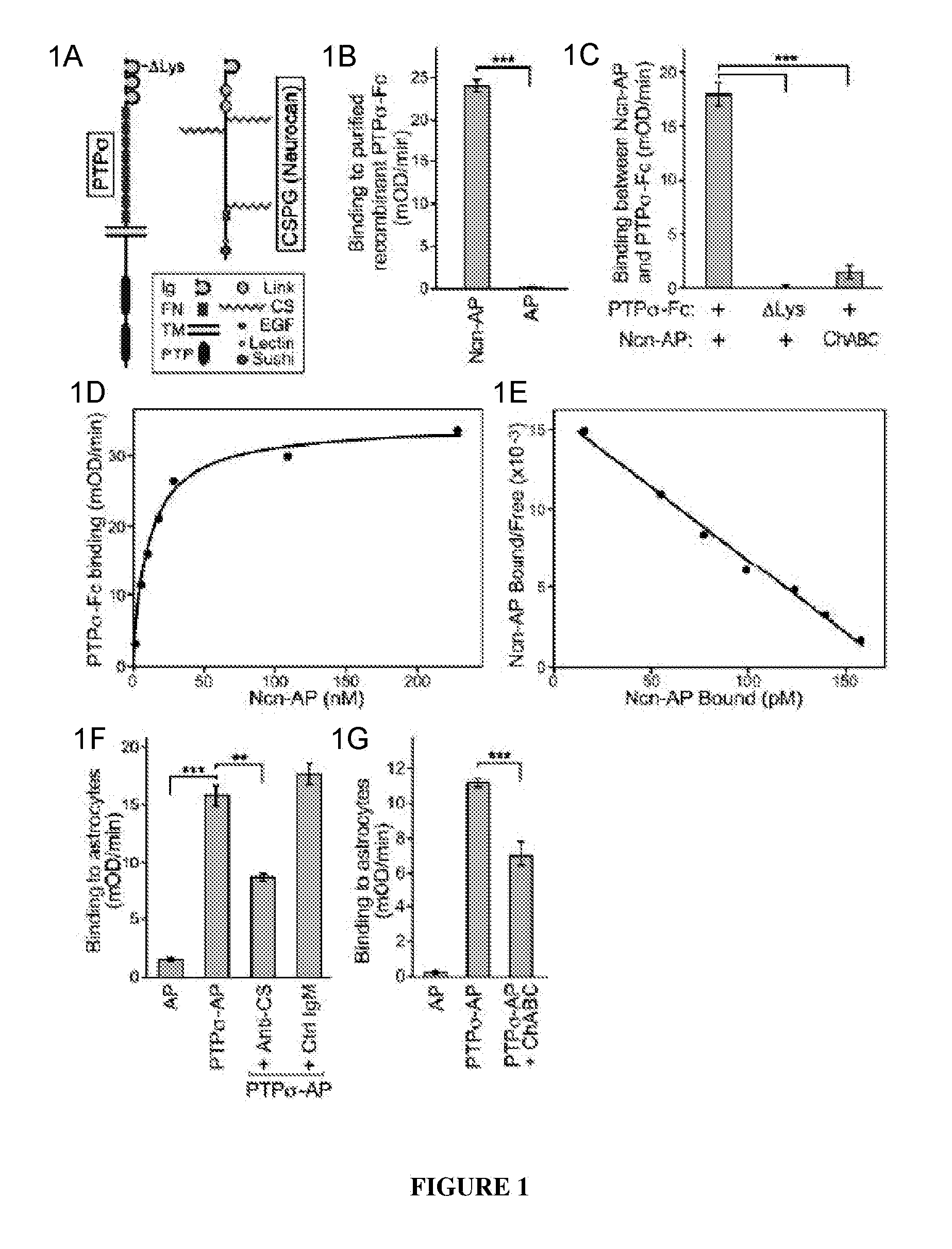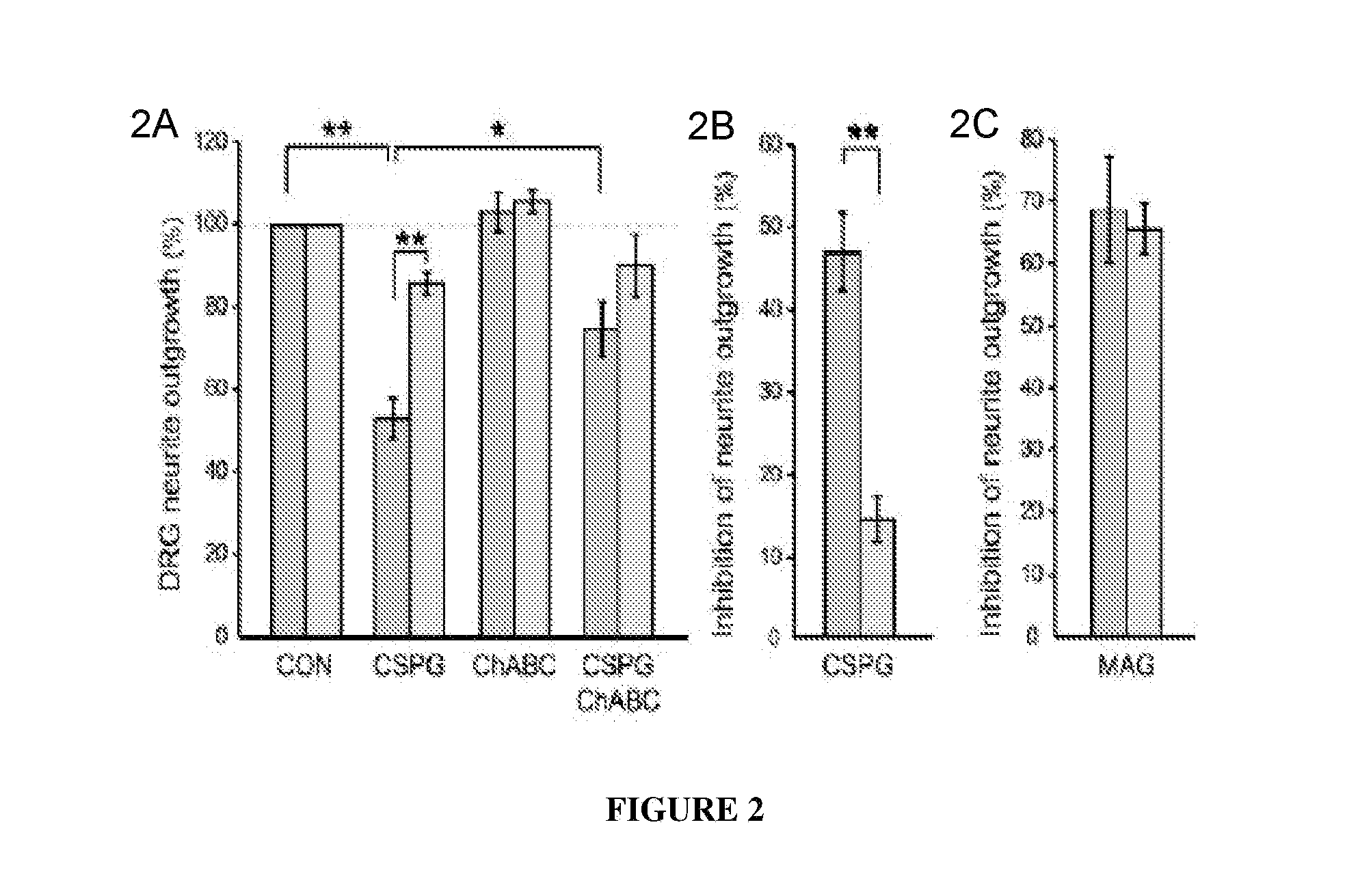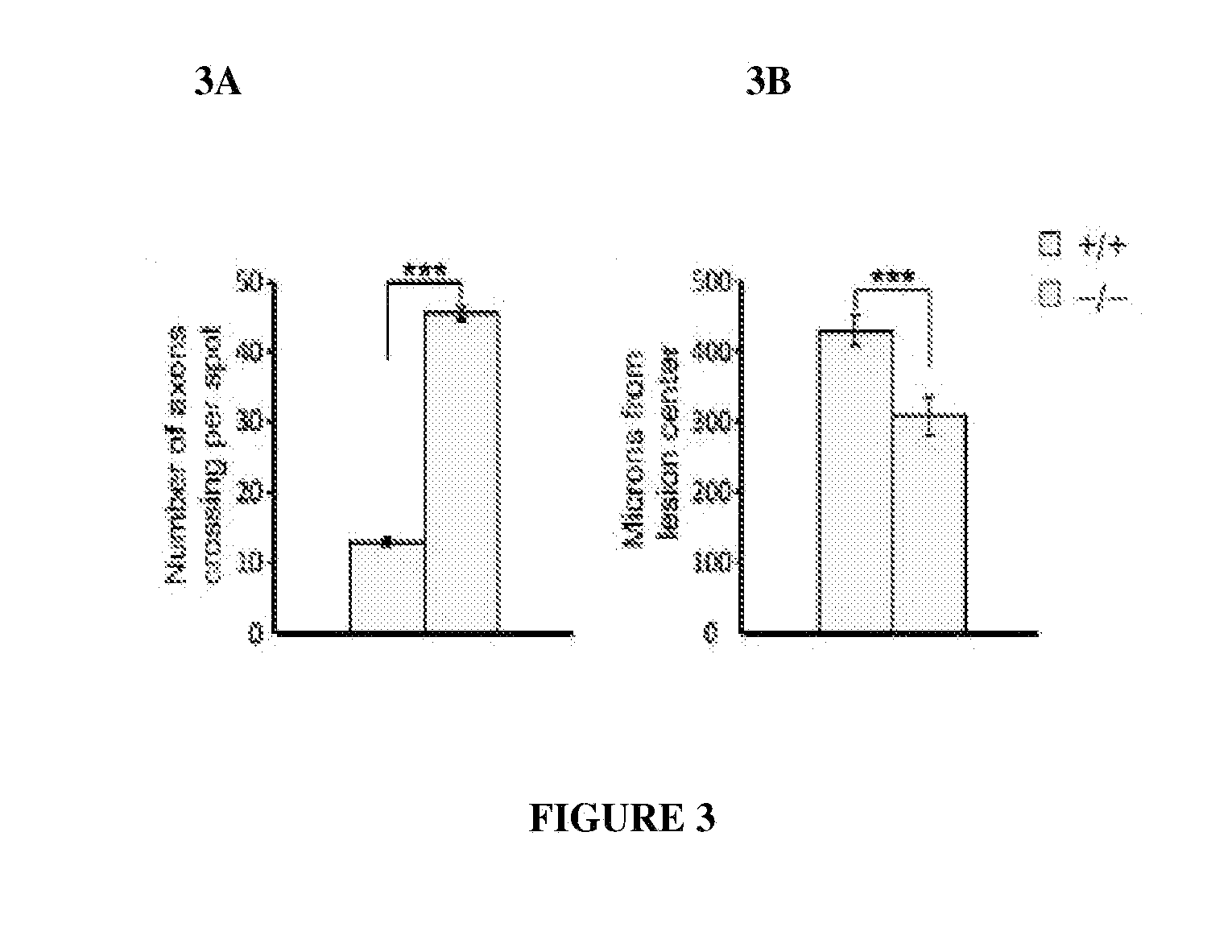Neural Regeneration
a neuronal injury and neuronal regeneration technology, applied in the field of neuronal injury treatment, can solve the problems of inability of adult cns to regenerate, limited ability for collateral sprouting of spared fibers, and inability to improve neuronal function, so as to enhance the ability of axons, reduce inhibition, and high affinity
- Summary
- Abstract
- Description
- Claims
- Application Information
AI Technical Summary
Benefits of technology
Problems solved by technology
Method used
Image
Examples
example 1
PTPσ Interacts with the CS Chains of CSPGs
[0135]The Ncn-AP fusion protein construct was generated by PCR amplification of nucleotide 1-2889 of a full-length mouse neurocan clone (Accession: BC065118, IMAGE:6853253) and subcloning the neurocan fragment into the NheI and HindIII sites of the APtag5 vector. See Flanagan et al., 327 Meth. Enzymol. 19 (2000). The resulting fusion protein includes neurocan amino acids 1-963 (N-terminal Ig domain, tandem link domains and central chondroitin sulfate attachment domain) fused to placental alkaline phosphatase. PTPσ-Fc and PTPσ-AP fusion protein constructs were generated by PCR amplification of nucleotide 1-2538 of a full-length mouse PTPσ clone (Accession BC052462, IMAGE 6834684), encoding the short isoform of PTPσ, which differs from the long isoform by alternative splicing to give 4 or 8 fibronectin domains. Chagnon et al., 82 Biochem. Cell Bio. 664 (2004); Sajnani-Perez et al., 22 Mol. Cell. Neurosci. 37 (2003). The PTP fragment was subclo...
example 2
PTPσ Mediates the Inhibitory Effects of CSPG on Neuronal Regeneration
[0157]Having identified a binding interaction between PTPσ and CSPGs, studies were undertaken to test whether PTPσ is functionally involved in the inhibitory effects of CSPG on neurons. DRG neurons express high levels of PTPσ throughout life. Haworth et al., 12 Mol. Cell. Neurosci. 93 (1998). Postnatal day 8 (P8) dorsal root ganglion (DRG) neurons from mice with a targeted gene disruption of PTPσ (Elchebly et al., 21 Nat. Genet. 330 (1999)), or wild type controls, were cultured in the presence of a neural CSPG mixture (FIG. 2—DRG neurons from P8 mice were grown for 18 hours, then treated for 24 hours with or without CSPG, and visualized by GAP-43 immunolabeling.) or purified neurocan (FIG. 5 and data not shown). The CSPG mixture reduced control DRG neurite outgrowth by approximately 50% (FIGS. 2A and 2B) but had far less effect on neurons from PTPσ− / − mice (p<0.01; 2A and 2B), showing a functional involvement of PT...
example 3
PTPσ as a Marker for Neuronal Injury
[0161]Tests were carried out to determine whether PTPσ has appropriate binding specificity to detect endogenous CSPG at sites of neural injury. In particular, experiments focused on whether PTPσ could preferentially recognize injured versus uninjured adult CNS tissue. The answer could not be deduced simply from its ability to bind CSPGs (FIG. 1), because PTPσ also binds HSPGs and potentially other ligands. Receptor ectodomain fusion proteins can be used to detect the distribution of their cognate ligands in tissues. Flanagan et al., 327 Meth. Enzymol. 19 (2000).
[0162]Immunofluorescence was performed on sections from the spinal cord lesion site and from unlesioned spinal cord. The sections were double fluorescence labeled with anti-neurocan antibody (Ncn), together with either PTPσ-Fc probe, or Fc control. In the unlesioned spinal cord, anti-neurocan labeled a thin line at the pia. PTPσ-Fc showed no labeling noticeably above Fc control. In the spin...
PUM
| Property | Measurement | Unit |
|---|---|---|
| time | aaaaa | aaaaa |
| time | aaaaa | aaaaa |
| time | aaaaa | aaaaa |
Abstract
Description
Claims
Application Information
 Login to View More
Login to View More - R&D
- Intellectual Property
- Life Sciences
- Materials
- Tech Scout
- Unparalleled Data Quality
- Higher Quality Content
- 60% Fewer Hallucinations
Browse by: Latest US Patents, China's latest patents, Technical Efficacy Thesaurus, Application Domain, Technology Topic, Popular Technical Reports.
© 2025 PatSnap. All rights reserved.Legal|Privacy policy|Modern Slavery Act Transparency Statement|Sitemap|About US| Contact US: help@patsnap.com



